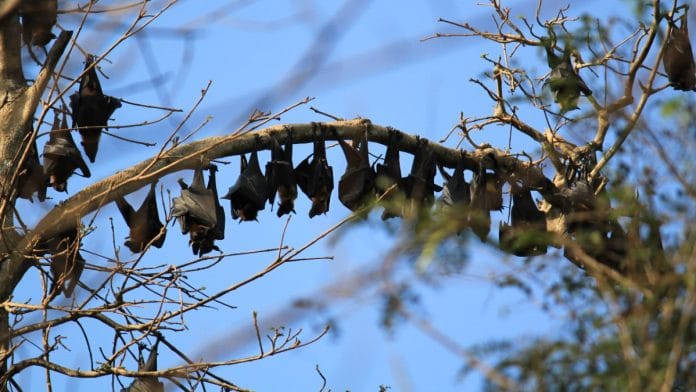New Delhi: A study by scholars from the University of Chicago has linked declining bat populations to increased infant deaths in some US counties.
Published in the Science journal on 6 September, the study aimed to understand the economic and health impacts of ecosystem losses like the deaths of bats, which act as natural pesticides.
A fungal disease called White-Nose Syndrome is killing bats across North America. In some agricultural counties in the US, this has led to an increase in pesticide use by farmers, which in turn has resulted in a 7.9 percent increase in infant mortality rates.
The study’s authors first measured bat deaths in these counties and found that they led to farmers increasing their pesticide use by 31 percent. Since pesticides have a harmful effect on environmental factors like water, food, and soil, the scientists then measured the impact on human health, one of the major indicators being the infant mortality rate. The additional 7.9 percent rise in infant mortality rate they calculated was due to natural/internal reasons rather than accidents or homicides. The study was an attempt to explain how ecosystem interactions can shape broader impacts on human health, economy, and agriculture. Read more here.
Also Read: How a collision with NASA spacecraft may have knocked an asteroid moon off course & out of shape
Patients with inherited blindness see 10,000-fold improvement due to gene therapy
Fifteen patients with a rare genetic eye condition called Leber congenital amaurosis (LCA1) experienced up to 10,000-fold improvement in their vision following gene therapy. A study published in The Lancet on 7 September described the findings of the University of Pennsylvania’s Perelman School of Medicine, which conducted the study on 15 patients with the condition, including children, who received varying doses of the therapy.
LCA1 occurs due to a genetic mutation of the GUCY2D gene, and the scientists targeted it with a gene therapy called ATSN-101. Different dosages of this were injected under the patients’ retinas and the most significant improvements were seen in those receiving the highest dose of ATSN-101.
Some patients who previously needed bright indoor lighting could see outdoors at night by bonfire light after the treatment. There were some side effects, but largely, the results were positive and indicate hope for treating inherited blindness in infants and others. This treatment is yet to receive clinical approval, as this was the phase ½ of the study. Read more here.
Milky Way’s supermassive black hole may have formed after merging with another
A study by the University of Nevada, USA, published in the journal Nature Astronomy on 6 September, aimed to uncover the origins of the supermassive black hole that is at the centre of our Milky Way galaxy. The researchers looked at data from the Event Horizon Telescope which provided the first direct imaging of Sagittarius A, or Sag A. The telescope is a global unit of radio telescopes spread across countries.
The scientists analysed the origins of the SMBH by looking at how it rotates or spins on its axis, the momentum, and the angle at which it spins, and compared it with other SMBH rotations. This comparison showed them that Sagittarius A has a unique rapid spin and is misaligned with the Galactic plane, that is, the plane along which most of the Milky Way’s mass lies and which is used as a reference point in astronomy calculations.
These observations then indicated to the scientists that Sagittarius A’s origins most likely involved a merger with another supermassive black hole, around 9 billion years ago, right after the Milky Way’s own merger with the Gaia-Enceladus dwarf galaxy 10 billion years ago. Read more here.
A third of world’s endangered species endemic to only 0.7% of world’s landmass
A study led by UK scholars on evolutionarily distinct and globally endangered (EDGE) species found that these species are spread over 0.7 percent of the world’s entire landmass. Published in the Nature Communications journal on 3 September, the study charted the evolutionary history and spatial distribution of 33,628 species across the world, indicating the different important zones across which they’re found.
The authors found that these tetrapods, which are so important to global evolution, are spread across five continents and 33 countries, and cover 0.723 percent of the world’s land which is currently not protected sufficiently. The study advocates for global conservation efforts to ensure these EDGE species and their natural habitats are protected for the evolutionary ‘Tree of Life’ to remain intact. Read more here.
(Edited by Gitanjali Das)
Also Read: Scientists from UC Davis implanted electrodes in ALS patient’s brain, and he found his voice again






